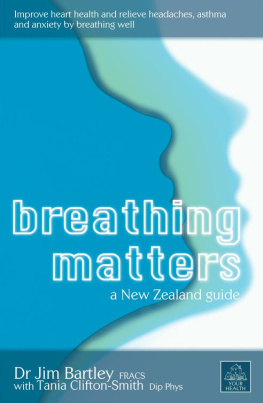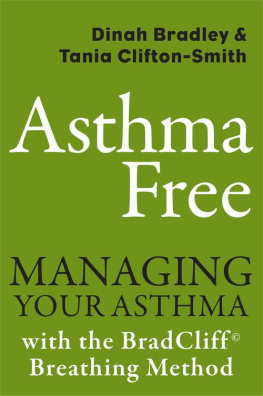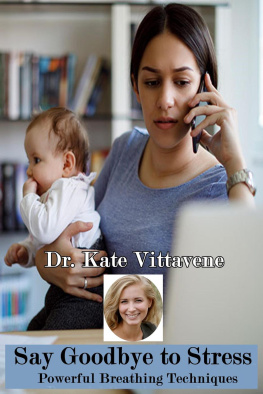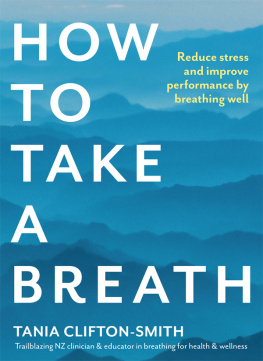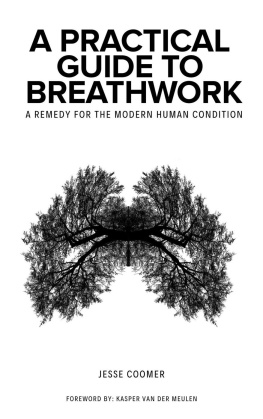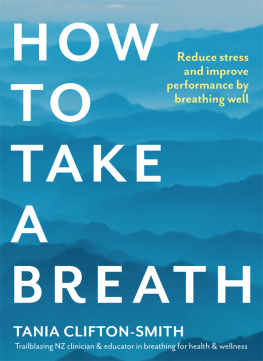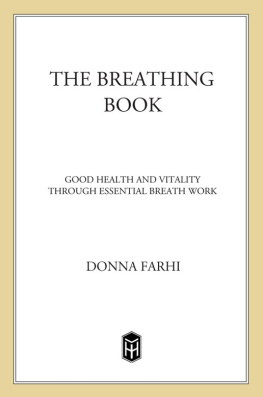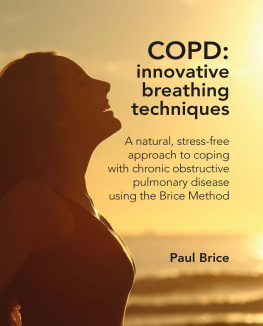Breathing Matters is a monumental book about breathing. No doubt, it is the gold standard, the definitive book on the subject against which all others will be judged in the future. It is comprehensive and detailed, and it spans virtually all aspects of the anat omy, physiology and psychological/behavioural concomitants of breathing, as well as applicable medical therapeutics and breathing retraining. I can say unequivocally that this book is and should be required reading for anyone wishing to understand breathing or undertaking to treat a functional or medical breathing disorder.
Like the Cathedral of Notre Dame de Paris, the books structure is magnificent and solid. Anyone who enters it will want to go from the bottom to the top, spurred by the wish to see what comes next and with relatively little effort. For at every level there are surprises for most of us: these range from little known though important curiosities, to major insights into clinical practice and treatment applications. I leave to the reader the pleasure of discovering them.
This book is the first of its kind. Until now, there have been a number of books with some form of the word breathing or respiration in the title. Some of them are about respiratory physiology or pulmonary medicine, while others are about yogic breathing and ways to transcend the conventional experience of consciousness. There are also compendiae of edited essays spanning breathing training applications, usually intended to tackle stress, anxiety and emotional disorders.
The latter are typically the work of individuals with a great variety of curious some even quirky theoretical reasons for their emphasis on breathing training. Few such books have a sound scientific basis and very few indeed cite any kind of reliable training outcome studies. Whats more, most of them, though they often include the obligatory tired, old and worn anatomical graphics about the lungs and the airways, equally often omit basics about breathing
Breathing Matters is about more than just breathing. It is about the body as a whole. Reading it did not leave me breathless! It speaks with a friendly voice, rather than the tone of the encyclopedist . It speaks with the reassuring voice of the family physician to whom we all turned for succour ages ago, rather than the passive, detached, scientific voice of modern medicine that often holds that therapeutics is exclusively either about biochemistry or surgery . There is nothing controversial in this book there are no polemics. Yet it holds much that may surprise many who thought they knew something about breathing.
Now, I for one having myself written a number of books on breathing thought that I knew something about breathing. After reading Breathing Matters, I immediately concluded that my something about breathing was really only something. This allencompassing book provides all the basic information that is required when one aspires to reach from information to wisdom.
We are learning so much, so fast, that hardly anyone can still be a generalist anymore. Looking at the chapters in this book, Breathing Matters clearly illustrates the dilemma, for none of its three major divisions represents a new field in breathing science, but in a sense they could each be a stand-alone book. The magic of this book is that these divisions form a whole that is really integrated into something greater than the sum of its parts.
After reading this book, breathing-training professionals will be better versed in related topics, including nutrition and exercise. And, thanks to Tania Clifton-Smiths input, theyll learn also about posture, exercise, stretching, and in-depth breathing retraining. They will get a carefully detailed description of the muscle structures engaged in breathing, such as those in the head, neck and thorax.
The later sections on breathing training in the various body postures and attitudes are an absolute must-read for anyone who seriously undertakes to do that, and I was delighted to see that Tania attributed the origin of breathing retraining to Claude Lum, MD, a pioneering British pulmonary physician from whom I learned so much. They will also learn about massage and more. And they will learn about common diseases where breathing is said to play a key role and much, much more.
It is a daunting task to identify and clarify all the major aspects of a professional health speciality even if it is limited to respiration physiology, medicine and therapeutics. Well, when it comes to breathing, Dr Jim Bartley has written a book that comes as close as anyone can get to giving all things to all people in that discipline. He does this within the framework of conventional, orthodox medicine, physiology and treatment. Yet, this book is obviously a labour of love that reveals his personal commitment to understanding each individual patient as well as the disease(s).
Breathing Matters is a testament to Dr Bartleys profound knowledge and engaging writing skills. He has extracted all of the essentials of breathing, synthesised them into a working whole, and then presented them to us in a volume that is exciting to read and one that we can easily hold in one hand.
This book is for professionals of every stripe and all lay people with an interest in their health. Dr Bartleys book stands out all the more as it is the only available comprehensive compendium that reaches into virtually all aspects of breathing.
Robert Fried, New York, NY, 2005
Robert Fried, PhD, is professor of biopsychology and head of the respiratory psychophysiology laboratory at Hunter College, City University of New York. He has published extensively on techniques for breathing retraining for functional breathing disorders. He has written a number of books on the subject, including: The Breath Connection; The Psychology and Physiology of Breathing in Behavioral Medicine, Clinical Psychology and Psychiatry and, Breathe Well, Be Well. He also serves as director of the Stress and Biofeedback Clinic at Albert Ellis Institute in New York City.
To our patients and colleagues who continue to teach us.
When all you have is a hammer every problem seems like a nail.
ANON
Doctors usually treat nasal and sinus disorders with the three most powerful tools at their command steroids, antibiotics and surgery . Consequently the nasal world is frequently perceived in terms of allergy, infection and altered nasal structure. The quick fix surgical and medical approach often works, but how does one help people with nasal and sinus complaints who do not fit into these classifications or who have been failed by these interventions? I often see patients who have had repeated prescriptions for oral steroids and antibiotics, as well as multiple operations, yet they are no better, and unfortunately sometimes worse.
From a simplistic surgical perspective, I theorised that if the nasal structures appeared adequate, then perhaps part of the problem might lie with function. How were these patients using their noses? I began to observe how patients used their lungs to pump air in and out of the nose. I started to examine my patients below the collarbones, a territory not normally considered the domain of an ear, nose and throat surgeon. I had to explain to some of my female patients that all I was observing was their breathing patterns!
Initially I observed that those patients complaining of nasal obstruction with structurally adequate noses appeared to breathe abnormally; they breathed both rapidly and predominantly in their upper chests. that the nose influences lung function. Any good design engineer would put in place feedback mechanisms that allowed the lungs to also regulate and influence nasal function. However, lung malfunction could then easily lead to nose malfunction.

